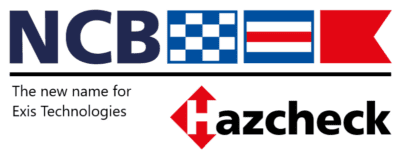TT Talk – New 2020 disciplines – dangerous goods in sight
The announcement of another fire on board a container ship early in January 2020 – the first publicised this year – reinforce the vital importance of increasing rigour around the transport of dangerous goods (and not just by sea).
Much energy has been devoted in the last year to identifying any common causes leading to cargo-related container ship fires. Understandably, considering the frequency and potential severity of these incidents, attention has to some extent focused on the capability to detect, suppress and extinguish fires at sea – after all the frightening reality is that a ship represents both home and work place for crew for lengthy periods of time and external firefighting assistance will generally be worryingly remote.
Consequently, there are calls for strengthening of firefighting protections and capability for cellular ships, which, while swelling in maximum capacity roughly four-fold over the last quarter century, have seen no substantial shift in either innovation or regulation over the period. The reliance below deck on CO2 in this context has been proven to be largely flawed and the alternative of water, while plentiful, can rapidly compound problems aboard. Ship stability may become compromised, let alone the potentially volatile reactivity of certain chemicals to water – and the subsequent human and forensic nightmare to navigate the noxious soup that forms at the bottom of the hold.
Control the entry
While TT Club participates in these ship-board debates, it sees its core contribution to seek significant improvements in cargo declaration and packing. The Club is unique in providing coverage through the entire freight supply chain and thus interacts with most of the actors involved. With its ‘cargo integrity’ campaign, TT Club has been seeking to enhance awareness of the issues and to urge implementation of more rigorous practices relating to entering cargo into the supply chain.
“TT Club is unique in providing coverage through the entire freight supply chain and thus interacts with most of the actors involved”
As is so often the case, fires and explosions are merely the ‘tip of the iceberg’ of the cargo problems that are observed. There are far too many errors in classification and declaration of commodities to be transported, often amplified by poor decisions and practices relating to packaging, packing, segregation and securing. Such things compromise safety in a variety of ways, but most critically when the goods should rightly be described as dangerous in a regulated sense and therefore subject to the UN Model Regulations [1]and the derivative modal regulations. For carriage of goods by sea, the relevant regulations are contained in the IMDG Code[2] issued by the IMO[3] on a biennial basis.
Promoting information tools
1 January 2020 marked the date of mandatory enforcement of the latest version of the IMDG Code, Amendment 39-18 (see TT Talk – IMDG 39-18 for a summary of the core changes). As a consequence, UKP&I and TT have again collaborated to update their publication ‘Book it right and pack it tight’. This guide provides key insights for all actors in the freight supply chain responsible for preparing unitised consignments for carriage by sea. The guide is intended to provide an overview of the key practical duties under the IMDG Code for each stakeholder, while not seeking to meet the mandatory training requirements.
“‘Book it right and pack it tight’ provides key insights for all actors in the freight supply chain responsible for preparing unitised consignments for carriage by sea”
Apart from promoting good practice and providing guidance, TT is an active participant in numerous industry organisations that are committed to enhancing safety. One such is CINS, a shipping line initiative founded in 2011 and now representing over 85% of the world’s container slot capacity. This organisation seeks to capture and analyse key cargo and container incident information in order to highlight safety issues and develop strategies to reduce incidents on board ships and on land in the container supply chain. Recent output from one of their workstreams was ‘Safety Considerations for Ship Operators Related to Risk Based Stowage of Dangerous Goods on Containerships’, guidance that seeks to “enhance safety on board container ships, recognising the significant complexities involved in achieving effective and compliant stowage of containers”. The document demonstrates substantial effort by the industry to bring understanding to the complexities involved in the ship stowage processes and develop elements of commonality of approach in order to improve safety. The guidance is explicitly stated as complementary to “ship operators’ existing measures for the carriage of properly declared dangerous goods”. Proper declaration is a paramount prerequisite!
One of the expert entities involved in developing the CINS Risk Based Stowage guidelines was Exis Technologies and their parent company National Cargo Bureau (NCB). Exis’ input was focused around its detailed knowledge of the IMDG Code Dangerous Goods List and stowage requirements, collaborating with industry experts to categorise each specific UN Number into the appropriate Risk Zones as defined in the guide. In order to support the use of the CINS stowage guidelines, Exis has gifted the Hazcheck Risk Zone Data as a free resource for the container shipping industry.
Recent incident history demonstrates that there is much work to be done to enhance cargo integrity – and not simply in relation to regulated dangerous goods. TT is committed to drilling down on the entirety of the processes that may compromise safety in the supply chain.







